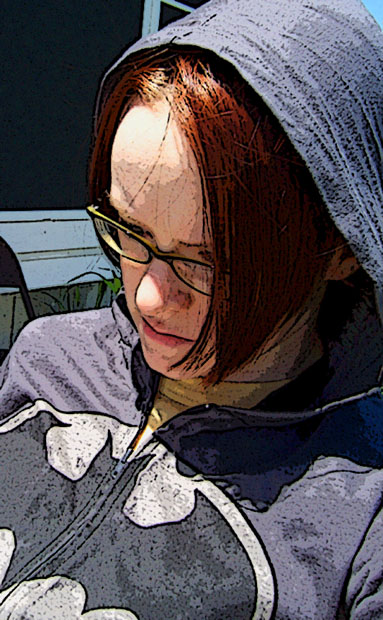Our class last night reminded me that anytime emulation and migration are mentioned, I start to get panicky. I should have known I'd end up in the digital preservation field; I distinctly remember sometime around 1997, when my Dad sent me an article he thought I'd find fascinating. It detailed the author's personal attempt to save the recordings by a musical artist from the 1970's (not someone who ever made it big on the popular charts). He detailed the use of tapes and CDs, and how the information was slowly degrading over time, and how transferring it digitally would eventually only increase this phenomenon.
I immediately panicked, preservation-happy packrat that I am. I was the girl who was the last kid in high school to get a CD player and was still relatively new to the joys of the digital medium. I rejoiced when CDs ended the pain of tangled or melted cassettes, and then DVDs saved us from the nightmare of VHS with its fading colors, its tiresome rewinding, and its lack of widescreen goodness. And then I found out that you couldn't just slap your data onto an optical disc and happily leave it for 100 years. Ah yes, welcome to the flawed real world.
We also discussed controversy and different approaches to digital preservation; for instance, making the decision to digitally restore decaying photographs or to document them as they are now. This reminded me of the controversy in the mid-1990's surrounding the restoration of the Sistine Chapel and the work of Daniele da Volterra aka "Il Braghettone" ("the breeches painter"). Michelangelo completed the Last Judgement in 1541, and by 1565 the Roman Catholic Church had initiated the Fig-Leaf Campaign to remove nudity in art, and comissioned da Volterra to paint braghe (loincloths) on eleven of the figures in the fresco.
Of course when restorers went to work on the Last Judgement, they clashed over whether to remove the braghe, thus restoring the painting to Michelangelo's original intentions, or to preserve da Volterra's work, which after all was also part of the art historical legacy. I'm glad I wasn't involved in that controversy! (In the end, 50 braghe by later painters were removed, by those by da Volterra were preserved.)
- Note: interested classmates can access my course notes on my wiki.



No comments:
Post a Comment